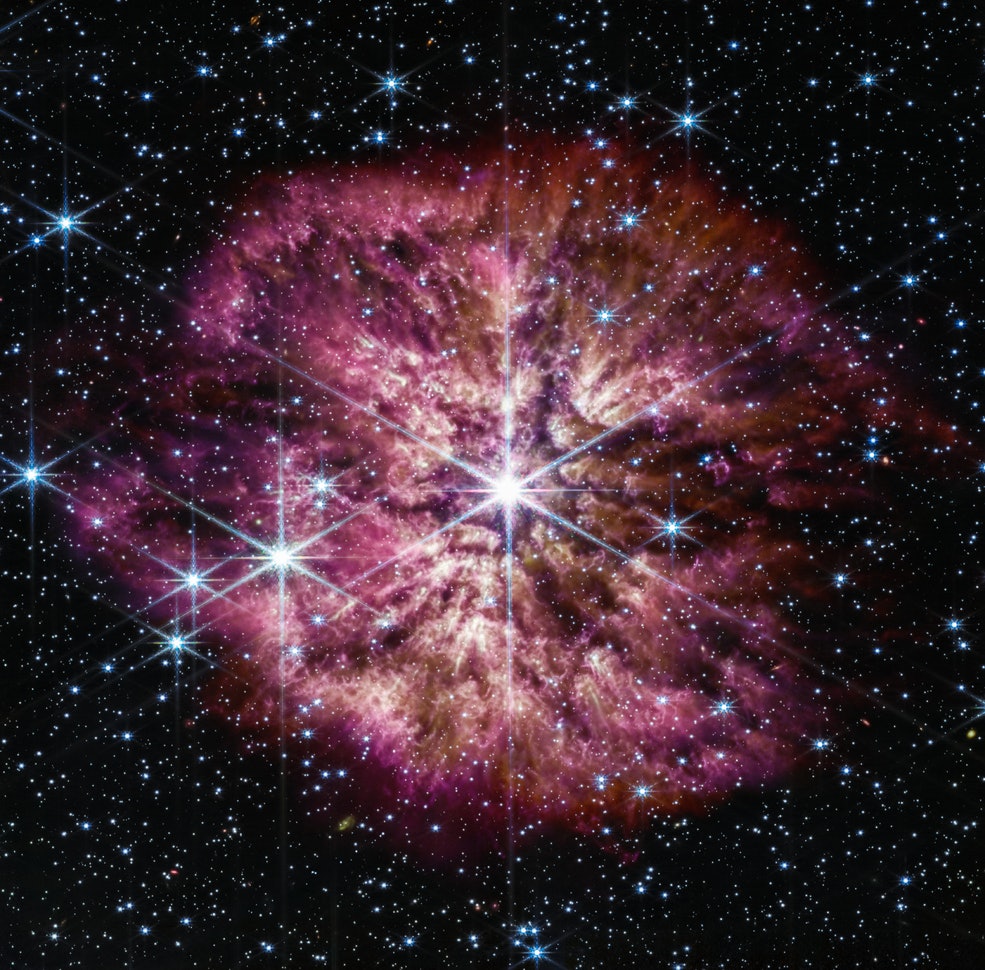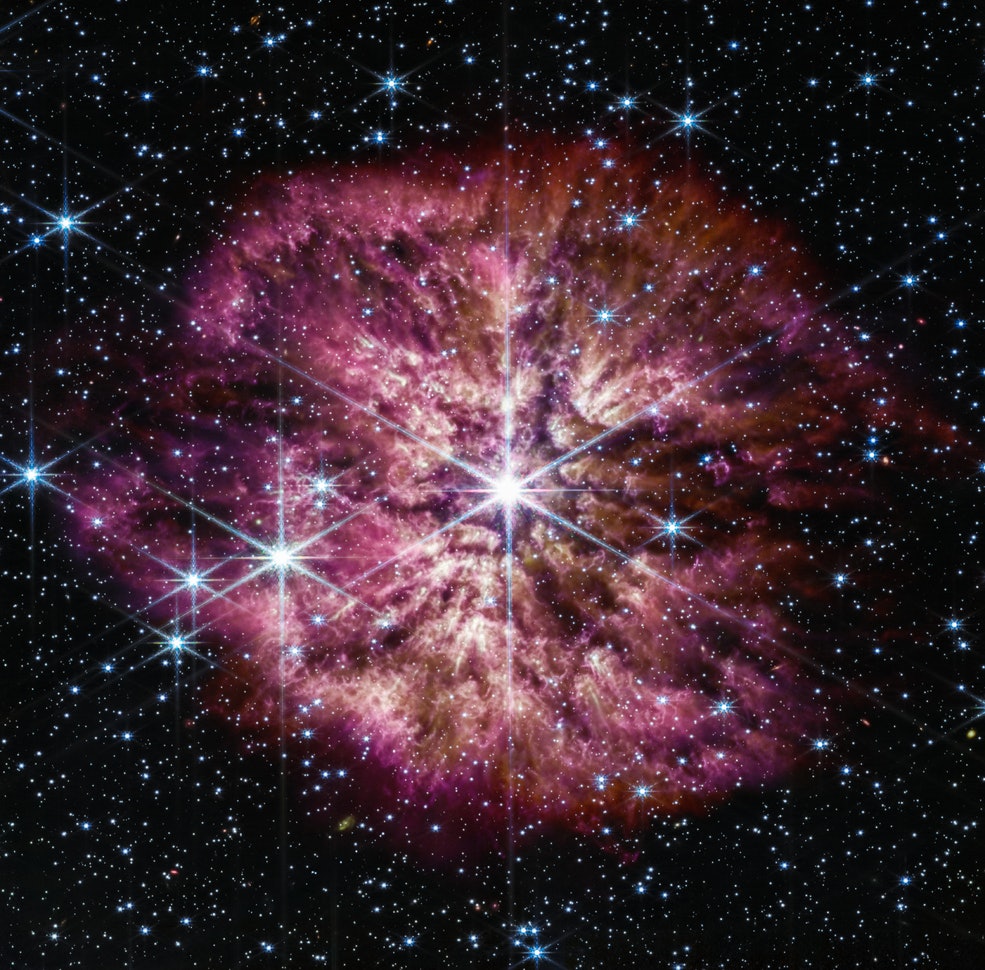
A panel of women astronomers debuted a gorgeous view of the Universe when they started NASA’s Tuesday keynote panel at the South by Southwest (SXSW) Conference.
They unveiled the latest dazzling sight of the James Webb Space Telescope (JWST): a star about to go supernova whose light took about 15,000 years to reach us. To put that into context, this pre-game show happened when woolly mammoths still roamed North America.
This star and others like it, called Wolf-Rayet stars, are big and bright. “They live fast,” Macarena Garcia Marin, European Space Agency/Webb Mission Office at the Space Telescope Science Institute, said during Tuesday’s panel.
“It’s really exciting,” said Garcia Marin. She added that seeing this object with the infrared sensitivity of the telescope opens up a new way of understanding the spectacular phenomenon.

This new image from the SXSW keynote panel called “Unfold The Universe: NASA's Webb Space Telescope,” depicts Wolf-Rayet 124. In an image description that NASA published simultaneously, the agency describes this and other objects like it as “among the most luminous, most massive, and most briefly detectable stars known.”
Wolf-Rayet stars are in the process of dying. What the image shows is the star casting off its outer layers. Garcia Marin told the audience that this object contains 30 times the mass of the Sun. According to the image description, it has already shed 10 times the Sun’s mass.
JWST is a project of NASA, the European Space Agency, and the Canadian Space Agency. It has, among other tasks, gathered data about the intricacies of dusty behavior because it views the Universe through infrared.
This allows astronomers to view dust that has cooled, that may not be producing its own light nor illuminated by the dying star, but which leaves a heat signature that, while dim, is within JWST’s capacity to notice.
The structures of the ejected dust clumps are rendered by the telescope’s Mid-Infrared Instrument (MIRI) and the sight of the gas around the bright core comes from its Near-Infrared Camera (NIRCam), according to the image description.
“Before Webb, dust-loving astronomers simply did not have enough detailed information to explore questions of dust production in environments like WR 124, and whether the dust grains were large and bountiful enough to survive the supernova and become a significant contribution to the overall dust budget. Now those questions can be investigated with real data,” NASA officials added.







